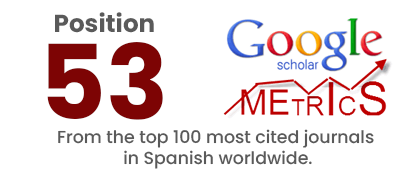Description of Picture with Application of Knowledge about Perspective during Teacher Training Practice at School
DOI:
https://doi.org/10.36097/rsan.v1i30.901Keywords:
perspective representation, writing and speech activity, essay-description, picture analysis, lessonAbstract
The article covers one of the aspects of teaching students a methodology of perspective analysis of paintings at classes of fine arts, as well as a possibility of applying the knowledge about perspective at lessons on writing and speech activity development dedicated to writing essays-descriptions of artistic canvases. The authors of the article introduce a sequence for analyzing perspective images. They suggest viewing pictures on the basis of determination of their main elements: right choice of viewpoint and of horizon line height, location of the interior, lighting and reflection conditions of the objects. All this allows revealing the plot of a work of art and defining its compositional center as an important component enhancing the emotional impact on a viewer. Particular attention has been paid to a verbal description - interpretation of artistic works. Meeting modern requirements on the arrangement of studies at secondary schools, this article offers a plan of a writing and speech activity development lesson devoted to writing essays-descriptions of pictures.
Downloads
References
Basics of composition (2017). [Electronic media] // Painting. Classics and Contemporaries. URL: http://www.artgorizont.com/articles.php?id_article=256
Bezdenezhnykh, N.V. (2013). Expositions, compositions, mini essay for primary school. Rostov-On-Don: Feniks, 285.
Cole Rex Vicat (1976). Perspective for Artists. Mineola: Dover, 279.
D’Amelio Joseph (1964). Perspective Drawing Handbook. NY: Tudor Pub. Co., 232.
Doust Len A. (2006). Perspective Drawing for Beginners. Mineola: Dover, 64.
Fowler, R. (1982). How to see through language: Perspective in Fiction // «Poetics». Nort-Holland Amsterdam, 11 (1982), 1, 213 – 235.
Grakhova, S.I. & Pavlova, N.A. (2017). Application of the golden section law at classes of fine arts and writing-speech activity. Philological sciences: Theory and practice issues. Tambov: Gramota, No. 5 (71), P. 3 179–183.
Karpov, I.P. (2012). Dictionary of authorological terms (educational and methodological version): book for teachers, students, professors, postgraduate students. Yoshkar-Ola: Mari State University, 135.
Mironov, A.V. (2015). How to make a lesson in accordance with the Federal State Education Standards. Volgograd: Uchitel, 174.
Norton Dora Miriam (2006). Freehand Perspective and Sketching. Mineola: Dover, 192.
Shabanov, N.K., Shabanova, O.P., Tarasova, M.S. & Pronina, T.D. (2005). Art and Education Dictionary. M.: Academic project; Triksta, 140.
The Golden Section. (2017). [Electronic media] // Eruditsiya: Russian Electronic Library. URL: http://www.erudition.ru/referat/printref/id.25506_1.html
SAFDARI, M., ARAB, B. A., & BAGHERI, G. A. (2013). Realization of economic justice through teleworking. UCT Journal of Management and Accounting Studies, 1(4).
Vredeman de Vries, Jan (2010). Studies in Perspective. Mineola: Dover, 96.
Watson Aldren Auld (2014). Waterfront New York: Images of the 1920s and `30s. NY: Quantuck Lane Press, 144.


















